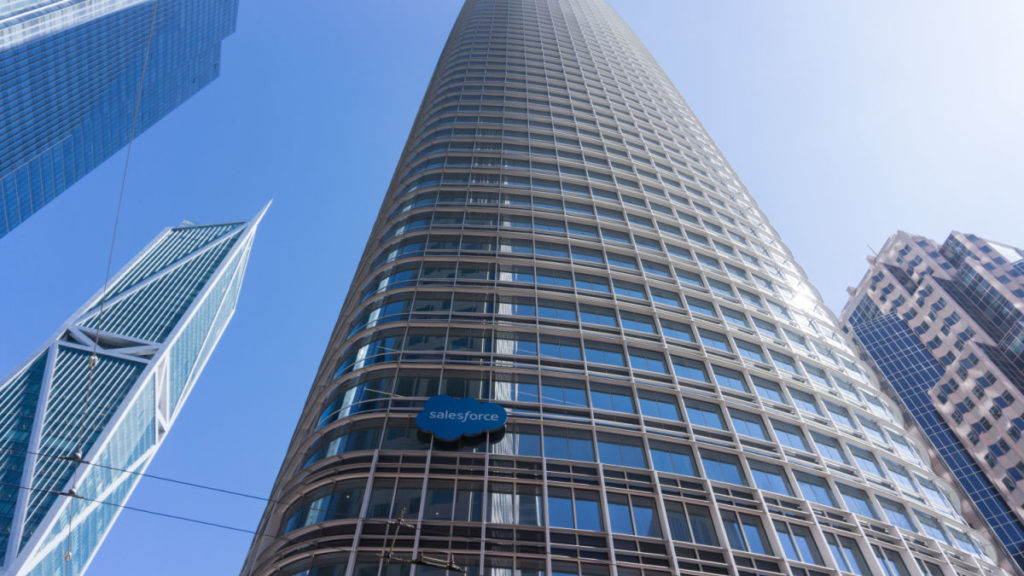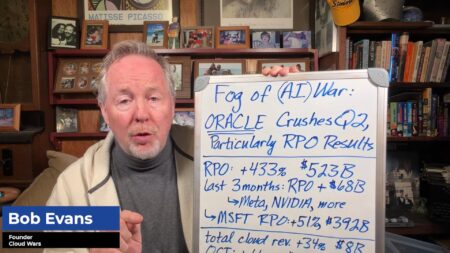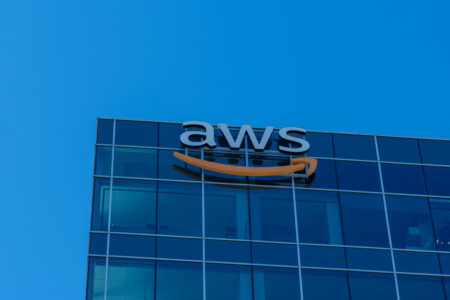
Salesforce’s reign as the world’s largest enterprise-apps vendor lasted exactly one whole quarter as its slumping Q3 growth rate failed to generate enough revenue to maintain its short-lived lead over longtime leader SAP.
Let me unpack this situation for you because this pitched head-to-head battle between SAP and Salesforce is a direct reflection of the extraordinary rise of the enterprise cloud, which is — say it with me! — the greatest growth market the world has ever known.
And because this seemingly isolated competition holds some big lessons for all us. But first, let me set the stage.
1. For the past several decades, SAP was the world’s largest enterprise-apps vendor.
2. For the past 15-20 years, Salesforce has been the world’s largest supplier of cloud-based enterprise apps.
3. Over the past few years, as the market for cloud apps soared and the growth rate for on-prem apps shriveled, Salesforce’s size and relentless growth in the range of 25% pushed its total revenue closer and closer to that of SAP — a market dynamic that, before 2019, would have seemed almost impossible.
Early this year, I began to wonder if 2022 would be the year in which Salesforce overtook SAP. In spite of SAP’s booming cloud business, Salesforce’s mass and consistent growth rates of more than 20% pushed it into the #1 position.
And three months ago, after almost 50 years of SAP being the big dog in the enterprise-apps space, the power of the cloud trumped history and incumbency, and Salesforce was able to claim the #1 spot.
As we reported on Aug. 29 after Salesforce released its fiscal Q2 numbers, “Salesforce Leapfrogs SAP as World’s Largest Enterprise-Apps Vendor.” While it was certainly a near-run thing —Salesforce reported total revenue of $7.72 billion for its quarter ended July 31, and SAP reported total revenue of $7.52 billion for its quarter ended June 30 — Salesforce had unconditionally taken the top spot.
But as we’ve said many times, blinking can be a bad habit in the Cloud Wars because things can change — and do change — rapidly and dramatically. So after holding that title of World’s #1 Enterprise-Apps Vendor for all of about 91 days, Salesforce must now pass the crown back to SAP. Here’s why:
1. For Salesforce’s fiscal Q3 ended Oct. 31, Marc Benioff’s company reported total revenue of $7.84 billion, up 14%.
2. But for SAP’s Q3 ended Sept. 30, the Germany-based vendor also reported revenue of 7.84 billion, exactly the same number as Salesforce. But, Christian Klein’s company reports its numbers in euros rather than in dollars, and with the crazy shifts in foreign currency exchange rates, the euro (as of yesterday morning as I wrote this) was worth $1.05.
3. That means SAP’s total Q3 revenue of 7.84 billion euros equates to $8.23 billion, a figure 5% higher than Salesforce’s $7.84 billion for the comparable period.
And that means we might look at the Salesforce ascendancy to the #1 spot as an anomalous blip rather than as a stable trend — particularly if SAP’s cloud business continues to grow anywhere close to the robust rates it’s been posting lately.
For example, let’s look ahead to Q4 (SAP’s ends Dec. 31, Salesforce’s on Jan. 31). A year ago in Q4, SAP reported total revenue of 7.98 billion euros, which equates to $8.379 billion. So even if its overall revenue stays flat for this year’s Q4, SAP will likely retain a significant lead over Salesforce.
Final Thought
For 800 years, the crowning of a new pope has been accompanied by the Latin phrase sic transit gloria mundi: “thus passes the glory of the world.” It is certainly possible that the glory that passed from SAP to Salesforce and back to SAP again will undergo additional transitions over the next few years in this extraordinary market.
Does it matter? Yes, I think it matters a great deal. Because some people tried to peddle the absurd notion that “legacy” companies have no future, and that only “born in the cloud” companies can survive and thrive in the acceleration economy.
SAP’s resurgence proves that is utter nonsense.
It also matters because it shows that the future is not written: Salesforce’s ascendancy was a great achievement, but it was fleeting. Nobody owns first place — it is merely occupied temporarily until a more worthy tenant comes along.
That applies to both SAP, which held the #1 spot for close to half a decade before having to give it up, and to Salesforce, which capped a superb 23-year run by displacing the iconic SAP.
Sic transit gloria mundi. I’m glad my Latin teacher pounded that into my thick skull back in junior high because it’s something all of us in the Cloud Wars should remember as we set about to create the future.
To see more Cloud Wars content, including all recorded sessions from June’s live Cloud Wars Expo, please register here for your Cloud Wars Expo on-demand pass. The on-demand pass, which is included with your Acceleration Economy subscription, gives you access to approximately 40 hours of invaluable educational content.









